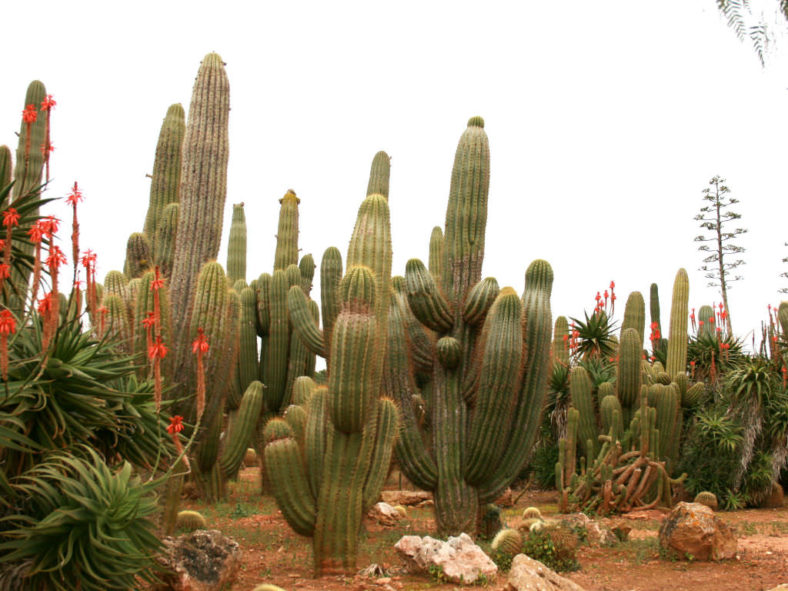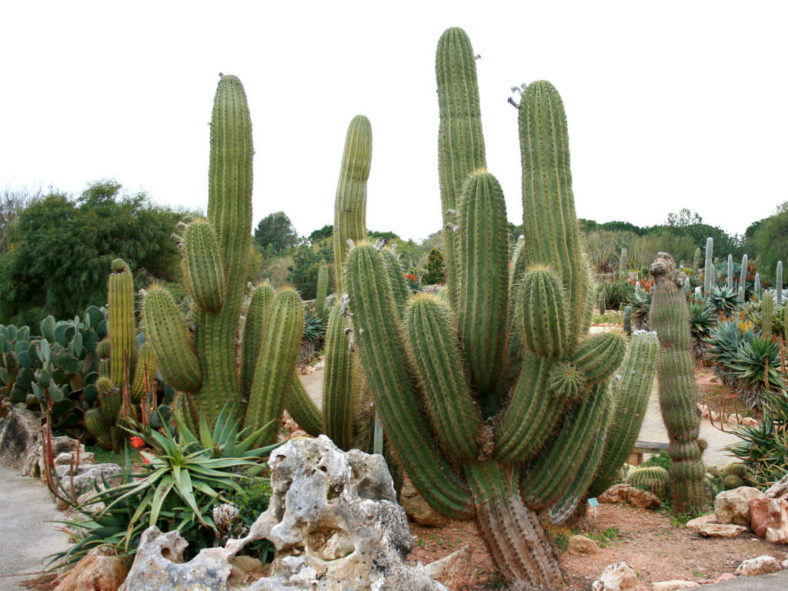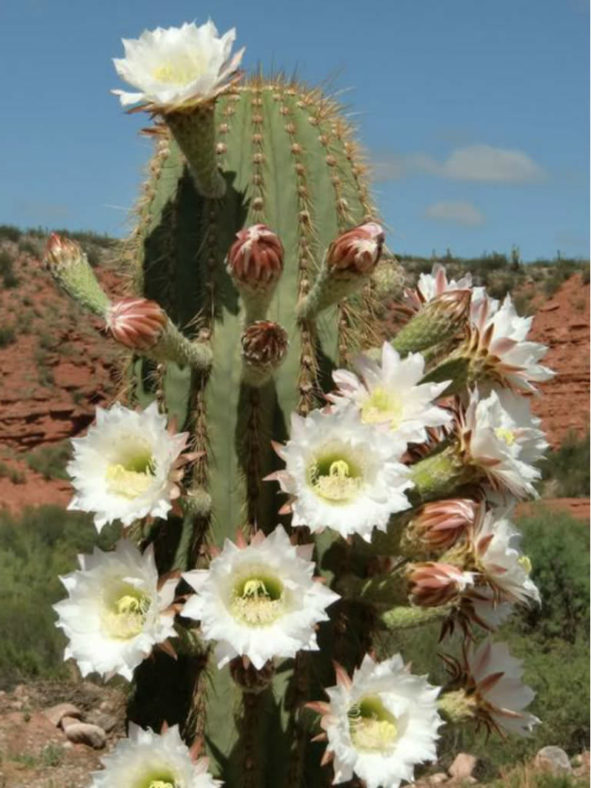Scientific Name
Leucostele atacamensis (Phil.) Schlumpb.
Common Name(s)
Cardon, Cardon Grande, Cavul, Pasakana
Synonym(s)
Cereus atacamensis, Echinopsis atacamensis, Helianthocereus atacamensis, Leucostele atacamensis subsp. atacamensis, Trichocereus atacamensis
Scientific Classification
Family: Cactaceae
Subfamily: Cactoideae
Tribe: Cereeae
Subtribe: Trichocereinae
Genus: Leucostele
Etymology
The specific epithet "atacamensis" (pronounced "a-tah-kah-MEN-sis") means "Atacaman; of, from, or pertaining to Atacama" and refers to the Atacama Region of Chile, where this species is found.
Origin
Leucostele atacamensis is native to Chile. It grows in arid soils in higher mountain areas of the Atacama Region, which occupies the southern portion of the Atacama Desert. This species grows at elevations ranging from 5,580 to 12,800 feet (1,700 to 3,900 m).
Description
Leucostele atacamensis, also known as Echinopsis atacamensis or Trichocereus atacamensis, is a massive cactus with a tall columnar habit, sometimes forming branches and becoming tree-like. The stems can grow up to 33 feet (10 m) tall and reach a diameter of up to 28 inches (70 cm). They have 20 to 30 ribs lined with areoles bearing 50 to 100 maroon-colored spines. The spines can measure up to 12 inches (30 cm) in length, but are typically around 4 inches (10 cm) long.
The flowers are rose-white, appear on the sites of the stems, and can reach a length of 6 inches (15 cm). The dark green edible fruits are densely covered with hairs and can grow up to 2 inches (5 cm) long.
Subspecies of Leucostele atacamensis

Hardiness
USDA hardiness zone 8a to 10b: from 10°F (-12.2°C) to 40°F (4.4°C).
How to Grow and Care
If you can grow cacti and succulents successfully, you can likely grow the Echinopsis species without much trouble. Like many cacti, they prefer a drying period between waterings, even when slightly wilted. When you water, however, you should water deeply. The plant will noticeably plump up. The cactus mustn't be exposed to prolonged dampness and standing water. Never let your cactus sit in a dish of water. Lastly, apply fertilizer during the growing season for the best results.
Echinopsis can easily be rooted from offsets, which tend to cluster around the mother plant's base. Cut offsets close to the stem, at the narrowest possible place. When rooting cacti from cuttings, let the fresh cutting dry out slightly on a paper towel, and cut the cacti at the narrowest place possible. After a few days to a few weeks, depending on the size of the cut surface, it should have dried out and formed a callous or slightly rough opening. Once the callous has formed, place the cutting in a rooting mixture of fast-draining cacti soil.
See more at How to Grow and Care for Echinopsis.
Links
- Back to genus Leucostele
- Succupedia: Browse succulents by Scientific Name, Common Name, Genus, Family, USDA Hardiness Zone, Origin, or cacti by Genus
Photo Gallery
Click on a photo to see a larger version.

